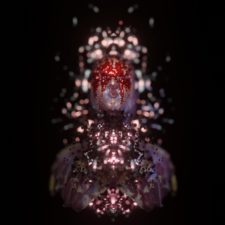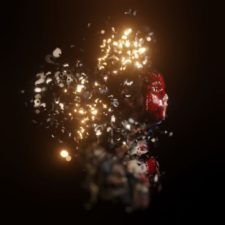Sotheby’s is a world-renowned, 275-year-old fine arts gallery. Their reach in the art market is unquestionable, as they usually host some of the most lucrative and coveted auctions. But they have shown that being centuries old is not at odds with being at the vanguard of technological innovation in a particular field. In 2021, when the bull market was in full force, Sotheby’s made a decisive play in the NFT art market. Two years later, after a crypto winter and not a full recovery, this auction house still bets in Web3, with a Metaverse and a secondary NFT art marketplace. Only selected artists can be traded in Sotheby’s NFT art marketplace, and the firm has committed to enacting artist royalties.
The fact that such an industry giant has backed the NFT art market is a stamp of approval for the sector’s potential. That those that are involved in it are not working in vain. That is because Sotheby’s might have noticed that NFTs could have an advantage over paintings (especially those at the high-end, the highly sought-after ones): the issue of fakes. This can be resolved through the blockchain by assigning an NFT to a painting; that way, you can trace who has owned the NFT and painting. And this is just the beginning.
Digital fine arts are emerging —not as a medium, because in this sense they have been a reality for some time, but as something you can acquire— and some artists have already acquired the prestige to command substantial fees for their work.
What does this mean for the NFT art market?
First, NFT artists now have access to the vast pool of collectors Sotheby’s has been to amass over the years. You cannot understate what that brand recognition can do for the NFT art market. And so, the significance of Sotheby’s creating a new marketplace —together with a Metaverse— is that it might facilitate the adoption of NFTs. By doing this, NFT art will get the credibility it deserves. At least among the crowd that has not gotten around to buying an NFT, and all they see is massive crypto valuation swings.
Secondly, according to a press release by the auction house, they will honor royalties. This is a great role model for people and businesses, as the dedicated NFT art marketplaces have made royalties optional, stripping artists from crucial revenue.
And so, it is a good thing there is an institution disrupting the concentrated power of NFT art marketplaces, which seem to have forgotten or discarded the ethos of serving creators.
A path forward for NFT art galleries
Art galleries have always behaved as marketplaces. With high sales volumes, high ticket prices, or specialization in a specific type of art, an art gallery has always been a marketplace for people to discover and buy art.
Being this the case, it could make sense that NFT art galleries start venturing into the creation of their own NFT art marketplaces and offer users and artists a mixed experience. That way, they protect their business and artists, and give themselves the possibility of creating more types of events that they can control and benefit the artists they work with. You could even start seeing the development of software that allows NFT art gallery owners to create their own marketplaces.
Even traditional art e-commerce can tap into these types of technologies. For example, buy a painting and mint its NFT equivalent to protect and verify its authenticity.
A still developing sector
NFTs as non-art can be many things, and this sector has shown that it is still nascent. It has many uses that people are still speculating about and discovering. With art, however, you can see many age-old operations transferred onto Web3. You have NFT art galleries providing curated events and showings. Marketplaces where people can buy digital artwork. What is being developed is how people interact with it all and the ease with which you can sell artwork once it belongs to you. You can see that some of these developments come thanks to the innovation of artists and small-time developers. In other instances, evolution can come through household names and brands.
SOPRG has the mission to provide artists and collectors with the best experience when buying and selling artwork. We help, counsel, and nurture artists so they become household names in the NFT landscape and also old-fashioned art. This is because we specialize in helping those artists who are used to creating physical paintings to leap into NFTs. Thanks to our state-of-the-art scanner, we will help you digitalize your artwork with the utmost fidelity. We will also transform it into an NFT and help you protect your intellectual property via copyright counseling. This is how art operators, a traditional profession with years of existence, have updated with technological advances. Change is the only constant in life, and SOPRG knows it.
Painting by Mr. Vavříček – you can buy the NFTs via our shop.





